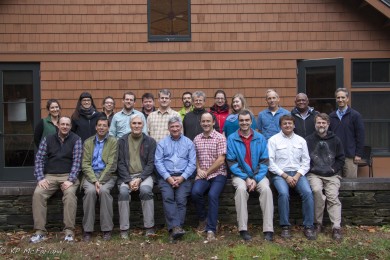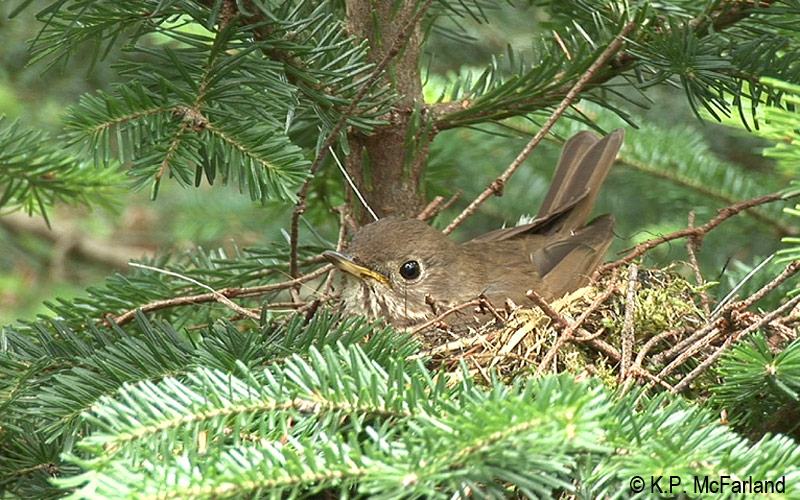An international conservation coalition has completed an updated plan to protect one of North America’s most rare and vulnerable songbirds, the Bicknell’s Thrush, across its entire range from the Caribbean to Canada.
The enigmatic thrush, with its swirling flute-like song and speckled breast, breeds in cool, moist evergreen forests on the high mountains and rocky coasts of the northeastern US and southeastern Canada. During the winter months, it retreats to wet broadleaf forests in the Greater Antilles.

In November 2015, five years after the first Plan was released, the IBTCG met once again in Woodstock, Vermont—site of the inaugural IBTCG meeting in 2007—to begin the process of revising the Plan. The two-day workshop highlighted significant progress towards the goals of the Plan, but also reinforced the need for continued action on behalf of Bicknell’s Thrush and its habitat.
The revised Conservation Action Plan for Bicknell’s Thrush provides the updated consensus of the International Bicknell’s Thrush Conservation Group (IBTCG), an alliance of scientists, conservationists, and governments, about the primary threats facing Bicknell’s Thrush and the actions that may help mitigate those threats.
The first Conservation Action Plan was released in 2010 and had a planned lifespan of 5 years. Actions taken by the IBTCG since the release of the first Plan have mitigated some important threats to Bicknell’s Thrush, but others remain largely unabated. The IBTCG recognized the need for an updated and revised Plan that would continue to catalyze action and guide the collective efforts of those interested in conservation of Bicknell’s Thrush. The goals set out in the first Plan have not changed: to increase population size by 25% by 2060 and to maintain or increase the extent of breeding occurrence.
The primary threats to Bicknell’s Thrush also remain largely the same. The three most significant threats to their viability are:
- The clearing and burning of forests in the Dominican Republic and Haiti to create agricultural fields and charcoal production.
- Incompatible forestry practices on the breeding grounds, especially in Canada.
- Climate change. .
“Although we face many obstacles in conserving this iconic species, the release of the updated Conservation Action Plan gives cause for hope,” said John Lloyd, director of science at the Vermont Center for Ecostudies and a lead author of the conservation plan. “The International Bicknell’s Thrush Conservation Group has brought together partners from across civil society, government, and private industry, and from each nation where this bird finds a home, to develop a collective vision for action based on sound science. Working together, with this plan as our roadmap, we have a chance to make sure that generations to come will revel in the sound of Bicknell’s Thrush and marvel at the forests on which it depends.”
The IBTCG estimates the worldwide population of Bicknell’s Thrush at 97,500 to 126,250 birds, making it one of the rarest migratory songbirds in North America. Annual surveys indicate that populations of Bicknell’s Thrush continue to decline, especially in core and northern parts of the breeding range. The most comprehensive trend data to date are derived from surveys in the northeastern U.S. conducted by citizen scientists as part of the Mountain Birdwatch program, an annual effort coordinated by the Vermont Center for Ecostudies, and in New Brunswick and Nova Scotia by biologists working with Bird Studies Canada.
The International Bicknell’s Thrush Conservation Group is an alliance of scientists, natural-resource managers, and government officials committed to advancing the study and conservation of Bicknell’s Thrush through sound science and international cooperation. The full conservation plan is available on the IBTCG website.

